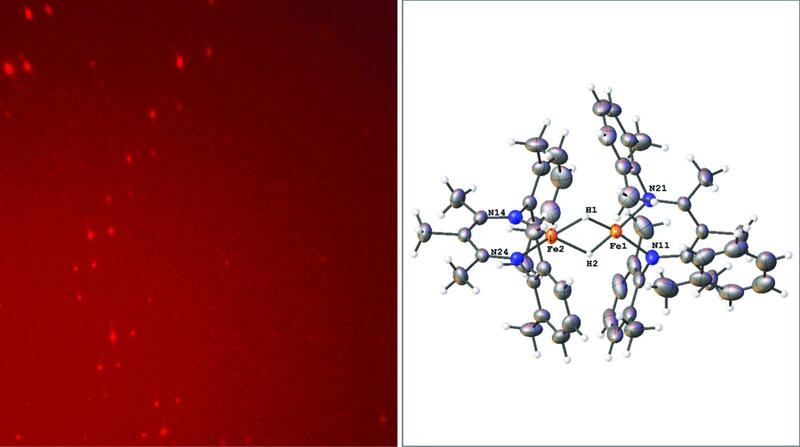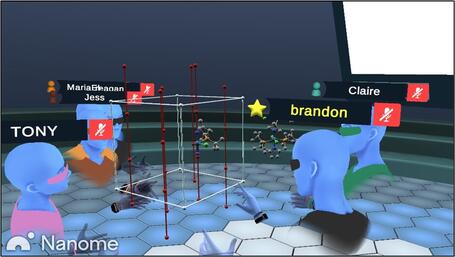
Have you ever stood inside a molecule the size of a house? The students at Yale Chemistry have. By way of virtual headsets, Brandon Q. Mercado, Ph.D., X-ray crystallographer, teaches them the various patterns used to bind molecules to make chemistry.
That’s not all he does. He helps researchers understand the atomic structure of compounds they’re working with via a crystal sample and X-ray camera. We met with Brandon in the X-Ray Crystallography Lab in the Chemical & Biophysical Instrumentation Center (CBIC) for a Q&A session about his job.
| TITLE | X-Ray Crystallographer and Lecturer |
| YEARS AT YALE | 10 |
What is X-ray crystallography?
Mercado: Crystallography, in general, is determining the spatial arrangement of atoms within a crystal. Using a diffractometer, you pass an energy beam, in this case, X-ray photons, through the crystal, and then they diverge systematically, giving a beautiful starry night-like pattern. We then do an inverse Fourier transform (a mathematical operation) to determine the molecule that gave rise to that particular pattern.
Why is X-ray crystallography important to chemists?
Mercado: What it means, practically speaking, is that the exact shape and composition of a new molecule can be seen for the first time. Research groups in the Chemistry Department are constantly making new molecules, and X-ray diffraction is the gold standard for definitively establishing the identities of those molecules.
What do they see in the crystal?
Mercado: They see their molecule, the types of atoms that make up the molecule, and the distance from one atom to the next. If we put ourselves in the crystal, we would see a latticework of the molecule going on infinitely. It’s like tile work, but instead of tiles, you have molecules; and instead of being two-dimensional, it’s three-dimensional.

The CBIC is part of a core facility. What techniques are available to Yale scientists?
Mercado: The university has an expressed mission to have shared facilities that are fully accessible to not just Chemistry, but to anyone who needs a particular technique. The techniques I support are X-ray scattering and imaging, single-crystal and powder diffraction.
What courses do you teach in your lecturer role?
Mercado: I teach Chem 511 Theory of Small Molecule Crystallography and Chem 512 Structure Refinement of Small Molecule X-Ray Crystal Structures.
There’s a theory component for the first six weeks; the last six weeks are practical in the lab. The students mount crystals in front of computers, learn to run and refine their data, and build models.

What’s the most exciting project you’ve worked on?
Mercado: I feel very fortunate to have helped many faculty members publish high-impact science. It would be hard to highlight just one.
I have a personal project that involves teaching crystallography in virtual reality (VR). I put the students into a virtual classroom, where we look at crystal structures in three dimensions through VR goggles. It’s much easier to see a crystal’s symmetry in virtual reality. You can imagine a 3D array of molecules hovering in front of you, and you can put yourself into that lattice, which can be the size of a house in VR.
Students come into the VR setting to see molecular motifs. When they go back to the lab, they’re better able to understand these structures when they design compounds.
Watch Brandon use X-ray crystallography to determine the structure of methamphetamine in Hamilton’s Pharmacopeia (season 3, episode 2, after the title sequence).
Learn more about the Chemical & Biophysical Instrumentation Center at Yale.